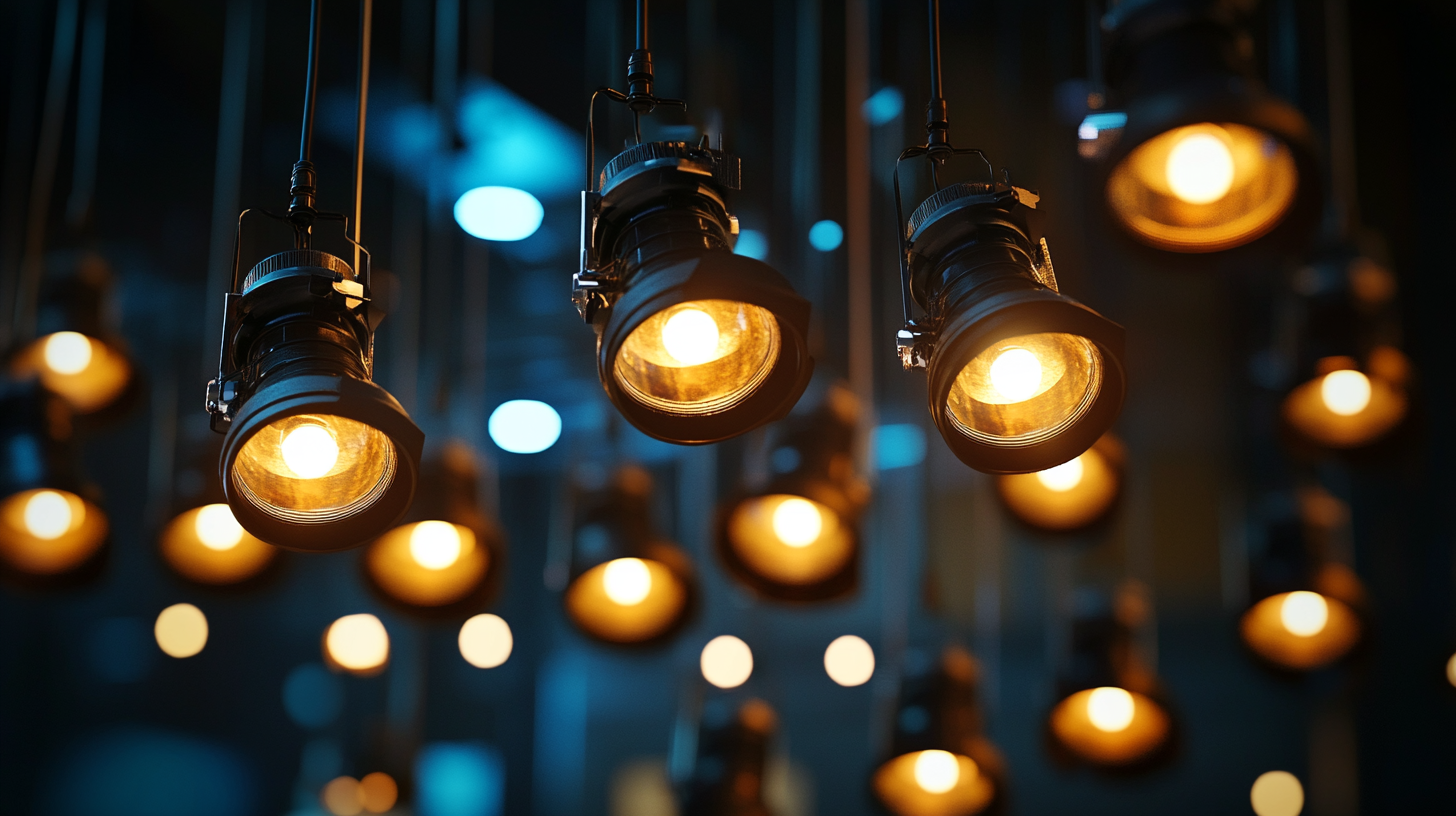How to Enhance Your Procurement Strategy by Utilizing Leading Lighting Solutions
In today's competitive business landscape, optimizing procurement strategies is essential for organizations aiming to enhance operational efficiency and reduce costs. According to a report by McKinsey & Company, companies can achieve savings of up to 20% on procurement by integrating innovative solutions. One area that often gets overlooked in procurement discussions is the adoption of leading lighting solutions. As highlighted in a recent study by the International Energy Agency, high-quality lighting can lead to a remarkable reduction in energy consumption—up to 40% compared to traditional lighting systems. By leveraging leading lighting technologies, businesses not only improve their sustainability profile but also create better working environments that boost employee productivity. As we explore how to refine your procurement strategy, it becomes clear that focusing on leading lighting solutions can deliver substantial financial and operational benefits.

Understanding the Role of Lighting in Sustainable Procurement Strategies
Incorporating lighting solutions into sustainable procurement strategies can significantly enhance both efficiency and environmental responsibility. Sustainable procurement emphasizes sourcing materials and services that have a minimal negative impact on society and the environment. Leading lighting solutions, specifically energy-efficient options such as LED technology, play a crucial role in this aspect. By switching to these solutions, organizations can reduce energy consumption, lower greenhouse gas emissions, and cut operational costs—ultimately contributing to a more sustainable business model.
Furthermore, the importance of proper lighting in workplaces cannot be overstated. Good lighting improves employee productivity and well-being, fostering a healthier work environment. By prioritizing high-quality lighting, procurement strategies can focus on products that promote sustainability while also enhancing the user experience. This multifaceted approach not only helps in meeting corporate social responsibility goals but also aligns with global sustainability targets, making it a vital consideration for any forward-thinking organization.

Impact of Efficient Lighting Solutions on Operational Cost Reductions
Efficient lighting solutions play a pivotal role in reducing operational costs for businesses. According to the U.S. Department of Energy, advanced lighting technologies can save up to 50% on energy costs compared to traditional lighting systems. These substantial savings are crucial for organizations aiming to optimize their procurement strategies. By investing in energy-efficient lighting, companies not only lower their utility bills but also minimize maintenance expenses, as LED systems have significantly longer lifespans—averaging 25,000 to 50,000 hours compared to just 1,000 hours for incandescent bulbs.
Furthermore, a study conducted by the Lighting Research Center indicates that improved lighting quality can enhance employee productivity by up to 20%. This increase in efficiency directly influences operational costs, underscoring the importance of integrating advanced lighting solutions into procurement strategies. By creating a well-lit work environment, organizations can reduce absenteeism and improve overall employee morale, leading to further financial benefits. The combined savings in energy, maintenance, and productivity make a compelling case for businesses to prioritize efficient lighting as a key component of their procurement strategy.
Impact of Efficient Lighting Solutions on Operational Cost Reductions
Leveraging Technological Advancements in Lighting for Procurement Efficiency
In today’s competitive market, enhancing procurement efficiency is paramount, and leveraging technological advancements in lighting solutions is a strategic approach many businesses are adopting. According to a report by Grand View Research, the global smart lighting market is projected to reach $140.76 billion by 2028, reflecting a compound annual growth rate (CAGR) of 24.7%. This surge in smart lighting technology not only enhances energy efficiency but also significantly reduces operational costs, making it a crucial consideration for procurement strategies.
Implementing advanced lighting systems, such as LED and IoT-enabled solutions, provides organizations with real-time data analytics and automation capabilities, which streamline inventory management and reduce waste. Research by the Lighting Research Center indicates that energy-efficient LED lighting can reduce energy consumption by up to 75% compared to traditional lighting options. This not only lowers utility bills but also aligns with sustainability goals, which is an increasingly important factor for stakeholders in the procurement process. By prioritizing these cutting-edge lighting solutions, companies can enhance their procurement strategy and drive significant cost savings while supporting environmental initiatives.

Key Performance Indicators (KPIs) for Evaluating Lighting Procurement Outcomes
When assessing the effectiveness of lighting procurement outcomes, it’s essential to establish robust Key Performance Indicators (KPIs). These KPIs should focus on various dimensions such as energy efficiency, cost savings, and functional performance. For instance, tracking the energy consumption reduction achieved through new lighting solutions can provide vital insights into the sustainability and economic viability of procurement efforts. Additionally, the installation and maintenance costs over the product lifecycle can help organizations evaluate overall financial benefits.
Moreover, replicability and scalability are crucial KPIs in the context of smart city initiatives, where lighting solutions can significantly influence urban development. By developing a methodological framework that aligns with the principles outlined in The Green Book, organizations can systematically appraise their lighting projects. This ensures that their strategies not only achieve immediate objectives but are also conducive to long-term growth and adaptability, capable of being implemented in varied contexts across different urban environments.
Case Studies: Successful Implementation of Lighting Solutions in Leading Industries
In today’s competitive market, the integration of advanced lighting solutions into procurement strategies has proven to be a game-changer for various industries. Take the manufacturing sector, for instance, where companies like Tesla have implemented energy-efficient LED lighting across their production facilities. These lighting solutions not only resulted in reduced energy consumption but also enhanced visibility on the shop floor, leading to improved safety and productivity among workers.
Another compelling case can be seen in the retail industry, where brands like Walmart have adopted smart lighting systems to optimize their store environments. By utilizing adaptive lighting technology, they have created a more inviting atmosphere for customers while significantly cutting down on electricity costs. This strategic move not only boosts shopper experience but also aligns with sustainability goals, further enhancing the company’s brand image.
These examples illustrate how leveraging innovative lighting solutions can lead to substantial operational benefits. As industries continue to evolve, adopting such technologies will remain key in achieving a more efficient and environmentally friendly procurement approach.
Enhancing Procurement Strategy with Lighting Solutions
This bar chart illustrates the cost savings percentage achieved by various industries through the implementation of leading lighting solutions. As seen, healthcare and hospitality sectors have experienced the highest savings, showcasing the impactful role of innovative lighting in enhancing procurement strategies.
